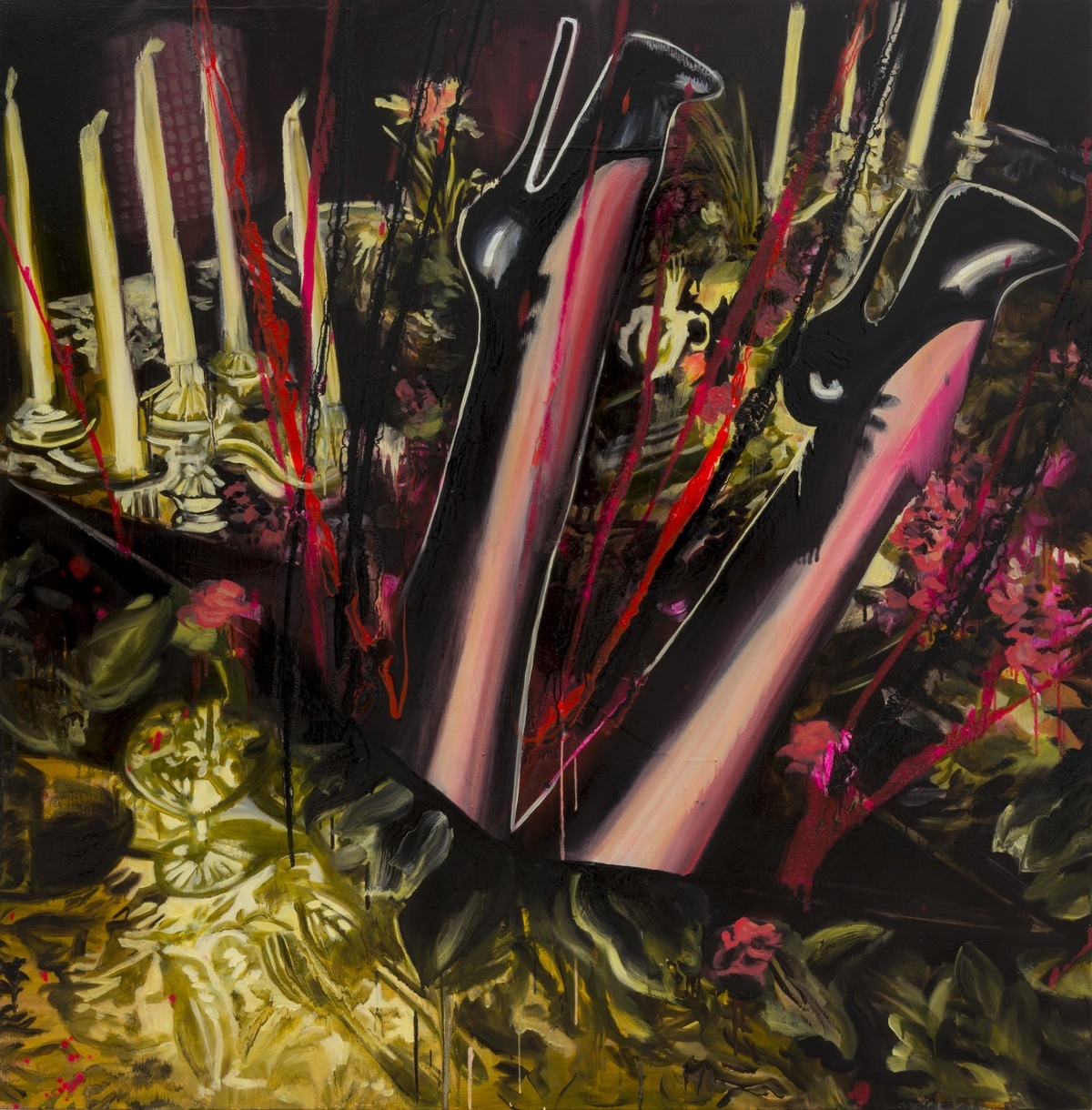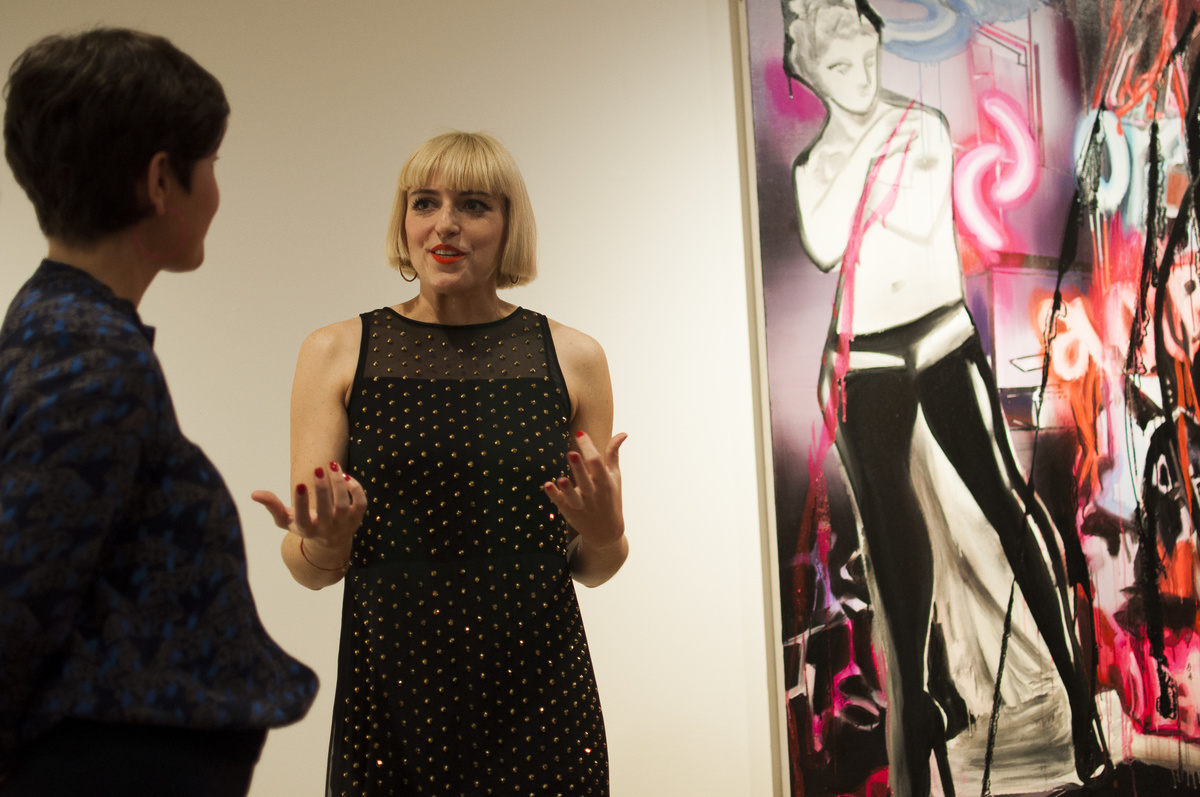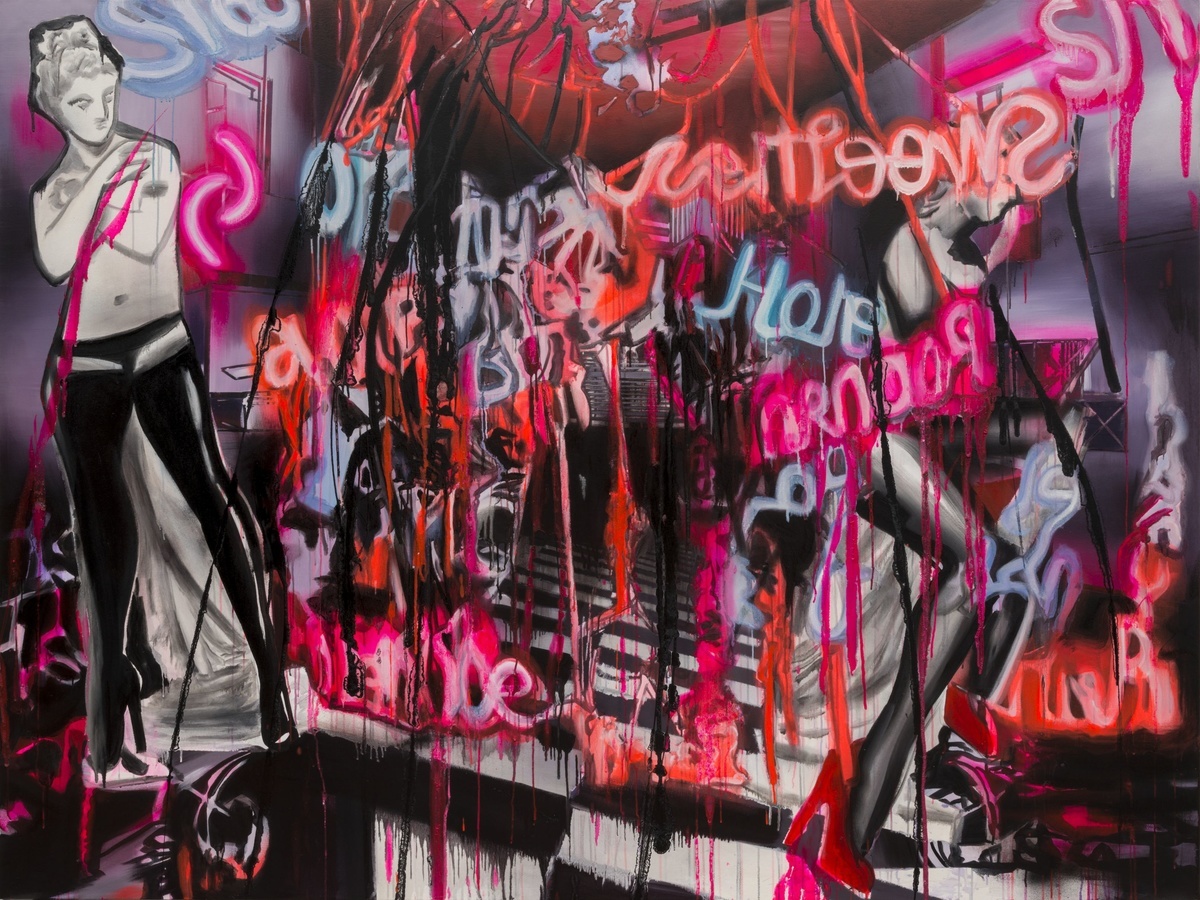In a 1971 essay entitled Why Have There Been No Great Female Artists?, feminist art critic Linda Nochlin attributes the absence of female Michelangelo’s and lady Picasso’s not to a lack of greatness, but rather to a historical bias against women which has not only forbidden them from artistic practices in the past, but also from being written about in the pages of history. Traditionally greatness has been male-defined, but as Dallas-born dreamboat Rosson Crow demonstrates, things are starting to change. From her large-scale paint-drenched canvases to her crazy show girl outfits, Rosson’s world is anything but black and white. Since graduating from New York’s School of Visual Arts in 2004, her work has been celebrated with a residency at the Cite Internationale des Arts, Paris and in exhibtions across the world. As Rosson takes us on a journey through galaxies of kaleidoscopic colour, in her latest group show Domestic Unrest, we caught up with her to talk gender, nostalgia and American history. Welcome to the Dallas Girl’s Club; bring your paintbrush!
Hey Rosson, what have you been up to recently?
I am making some new works for a show at the Musée Régional d’Art Contemporain Languedoc-Roussillon in Serignan, France. It will be a huge show, about 30 paintings from my past work, with some new paintings as well. A mini retrospective!
Where do you call home?
Los Angeles, California.
Is that where your studio is?
Yes!
What inspires you most?
I can be inspired by almost anything… Travel always inspires new ideas; reading – both novels and historical nonfiction – the downtown Los Angeles library is a source of endless inspiration, going to flea markets; or just taking a hike around the hills in my neighbourhood.
Why painting in particular?
I think there is something that painting has that no other art form can replicate. There is a slowness to painting; it requires the viewer to stop and look and experience the surface and texture of the image that you don’t get with photography or other mediums. There is a sexiness in painting.
Would you ever move to sculpture?
I am not opposed to it, and would like to try it one day. Although, I think my first step away from painting would be film.
You paint a lot of interior spaces. Historically only still lifes and interiors were considered appropriate for female artists, while male artists tackled the more superior historical, religious and mythological genres, do you worry about confining yourself to feminine-defined spaces or is that status quo something you want to challenge?
No, not really. I don’t see myself as confined to painting only interior spaces; I also paint landscapes and outdoor scenes as well. But I think there is something interesting to play with the idea of interiors traditionally being considered more of “feminine space.” I like to play with the idea of gendered spaces, masculine vs. feminine spaces and how these things are projected and perceived.

Over the years, such a big deal has been made about the “lack” of great female artists in history. Does being a woman affect your work?
There hasn’t been a lack of great female artists, just a lack of recognition for them! Being a woman in the art world is difficult sometimes but it’s obviously my only experience, so I can’t say how it compares to the male experience. I suppose being a woman affects my work; it is part of my identity and therefore everything I make is filtered through that experience.
Does it affect the way your art is viewed and discussed within the art world?
Sometimes, yes. Many people who don’t know me assume that I am a man, based on my work.
Does it bother you when people describe your work as “masculine” just because your work isn’t generically pretty?
No, not really. I am not trying to make conventionally pretty work, I am more trying to create experiential worlds that are sometimes dark, sometimes violent, sometimes aggressive, sometimes joyful, and sometimes all of these things at once.
Do you think there is still an institutionalised sexism within the art world?
Absolutely. The art world is overall a big boys club. You only have to look at the market, the artists galleries represent, the artists that the big collectors buy or leaf through an auction catalogue and compare price discrepancies. There are small signs of change everywhere though, so I am hopeful that things will eventually even out.
There’s a distinct darkness and eeriness to your work – where does that come from?
I have always been interested in the dark psychologies that drive us as people or a nation or as a human race.
What does nostalgia mean to you?
A misremembering of history; a romantic yearning for a past that never was.

What is it about history, particularly American history, which interests you most?
Ever since I was a child, I was fascinated by history. I think it was the idea of the past and transporting yourself to another time and recreating all the ghosts and events that could have transpired somewhere. I’m interested in history as a concept, how it is totally abstract yet influences everything that comes after it. Historical space is not real space; it is imagined or recreated. I think that America has an interesting relationship with history, compared to Europe. We are such a young nation comparatively and I think we are more prone to nostalgia and recreations and romanticising our past.
Does colour have a specific expressive meaning to you beyond its basic quality?
I use color to create mood and atmosphere in the works, it can have very strong psychological effects, so I try to use color to convey the mood of the painting.
How does it differ when working in monochrome?
It’s similar, just using a very limited palette. The monochrome works were part of a very dark series so it worked well for those particular paintings.
Do you pay attention to current artistic trends?
I am vaguely aware of artistic trends, you can see them like waves when walking through an art fair. I don’t really go to art fairs very often though. Trends come and go, so it’s best not to worry about it.
Has the recent onslaught of digitalisation affected your work?
I think there may be a reaction against everything digital to return to the simplicity of painting.
If you could collaborate with any artist in the world, dead or alive, who would it be?
Mozart or Cormac McCarthy.
Tell us about your latest show Domestic Unrest?
I was thrilled to be in a show with two other amazing female artists – Mickalene Thomas and Francesca Dimatttio. All three of us use interior space to some degree in our work and it was interesting to see all of our paintings together. It was a conversation about the idea of domestic space and the “feminine.”
Domestic Unrest is open until 26th April 2014.
Credits
Text Tish Weinstock
Artwork Rosson Crow
